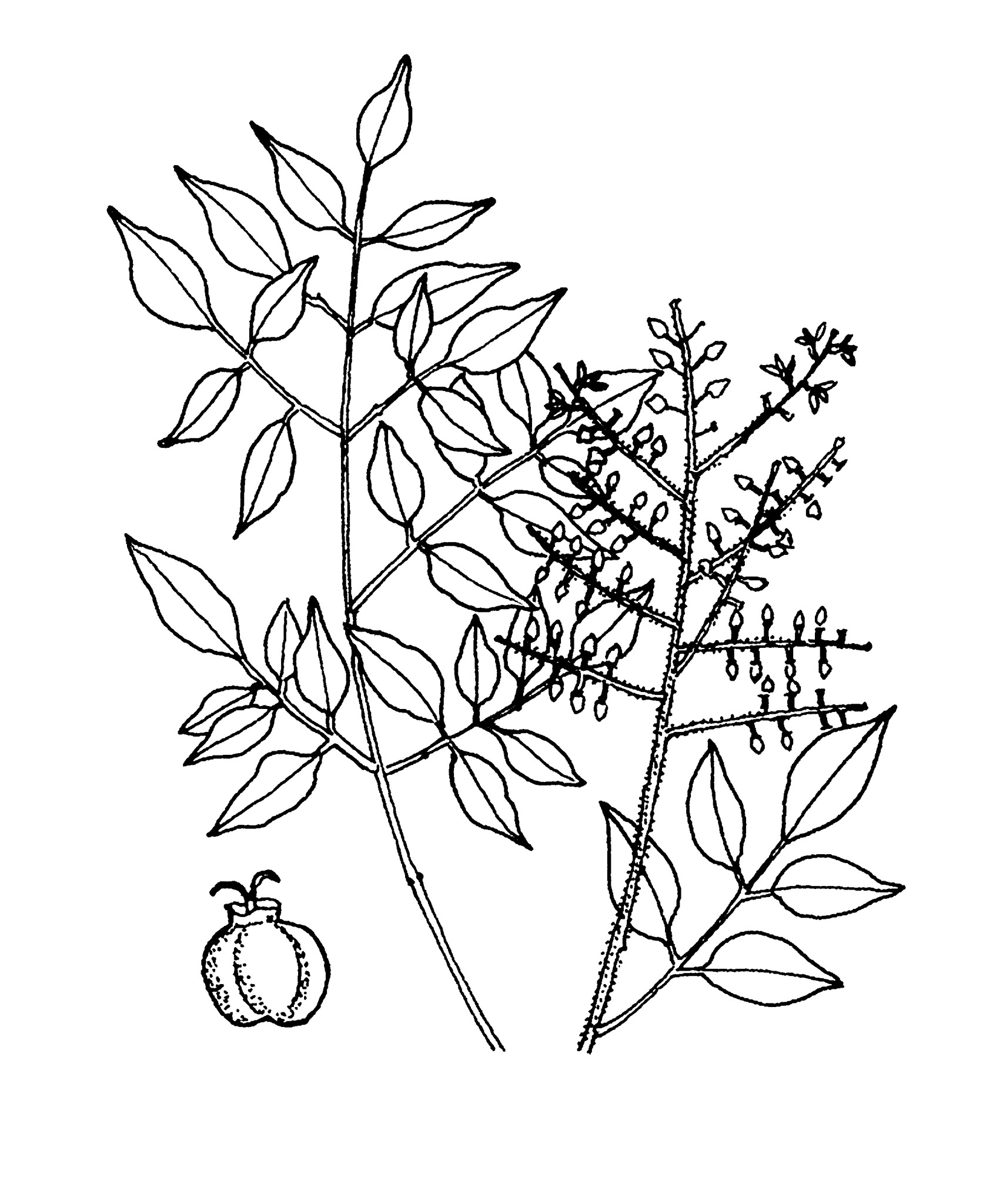
Greek poly — many, scias — canopy, umbel, referring to the compound flower clusters.
Small to large trees or shrubs. Leaves odd-pinnate, divided up to 3 times, but sometimes of 1 or 3 leaflets and clustered at the tips of the branches; stipules absent or as ligules or wings fused to the leaf stalk. Flower clusters terminal, compound. Flowers unisexual or bisexual and on the same plant, rarely solitary. Petals and stamens mostly 4 or 5. Ovary mostly 2-5-chambered. Fruit a fleshy round or flattened drupe.
Grown as ornamental rainforest trees for the interesting foliage, most frequently in warmer districts; rarely encountered S of Sydney.
Seed, cuttings, root division.
Source of perfumes and medicines; an extract is used to stun fish.
Pinnate leaves.
About 159 species from the Old World tropics, especially Madagascar, New Guinea, New Caledonia. Australia has 10 endemic species.
Source: (2002). Araliaceae. In: . Horticultural Flora of South-eastern Australia. Volume 4. Flowering plants. Dicotyledons. Part 3. The identification of garden and cultivated plants. University of New South Wales Press.
